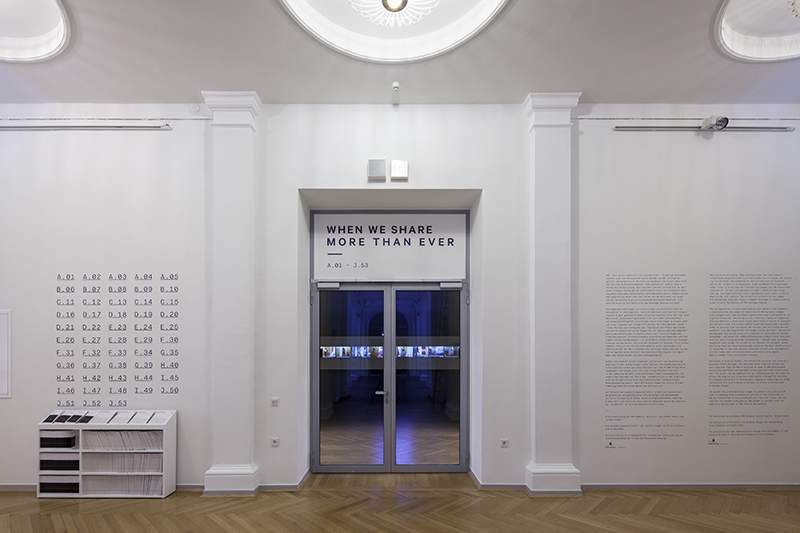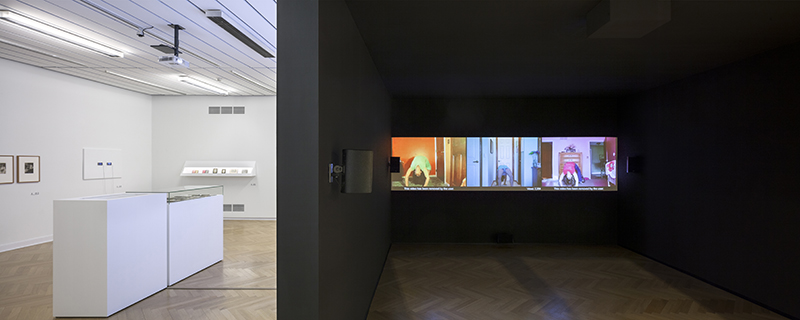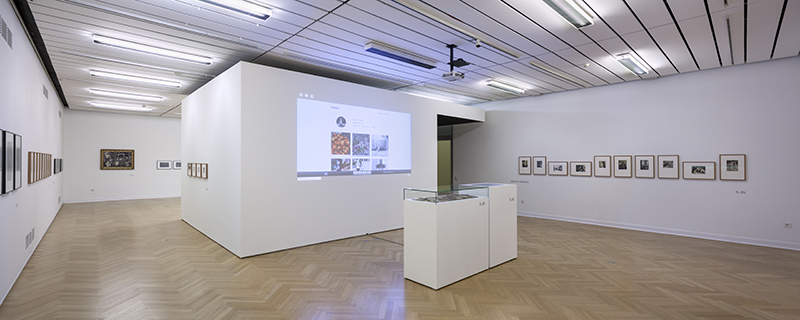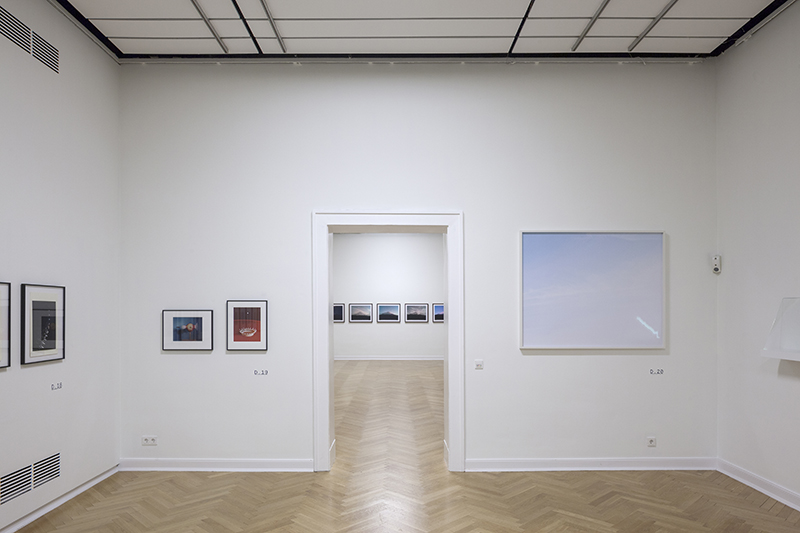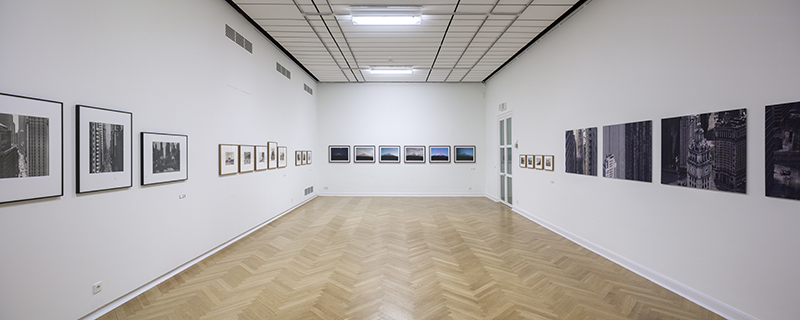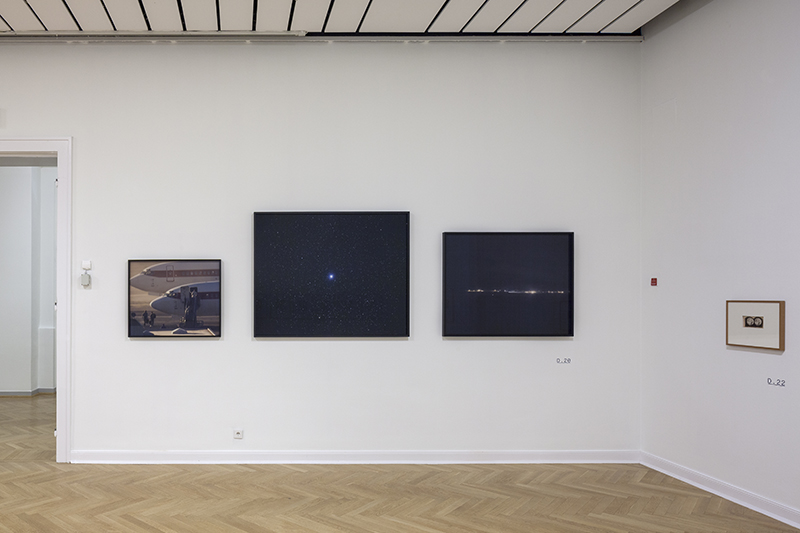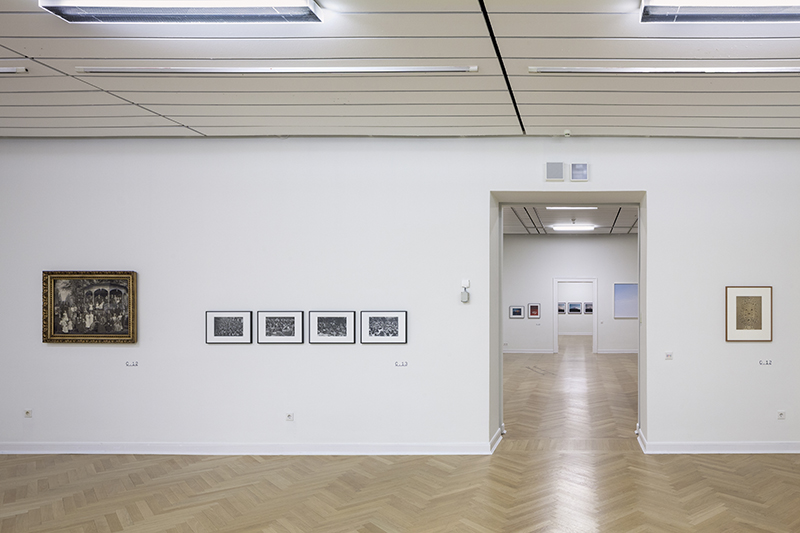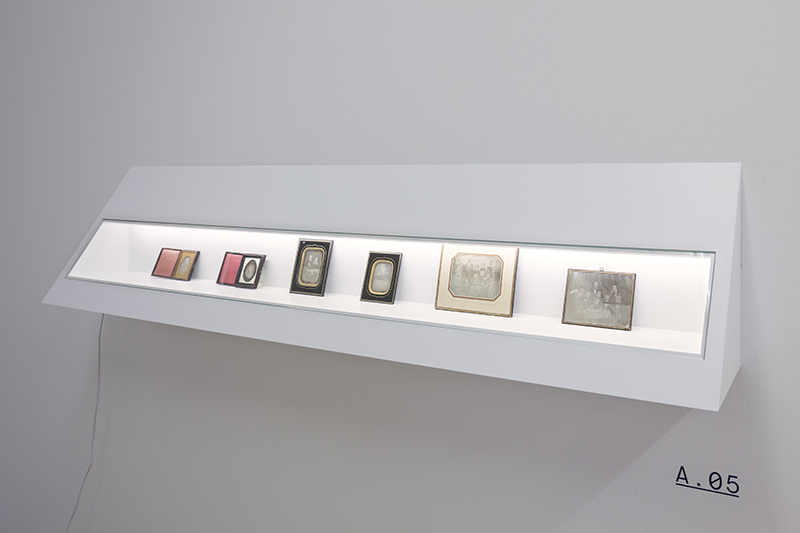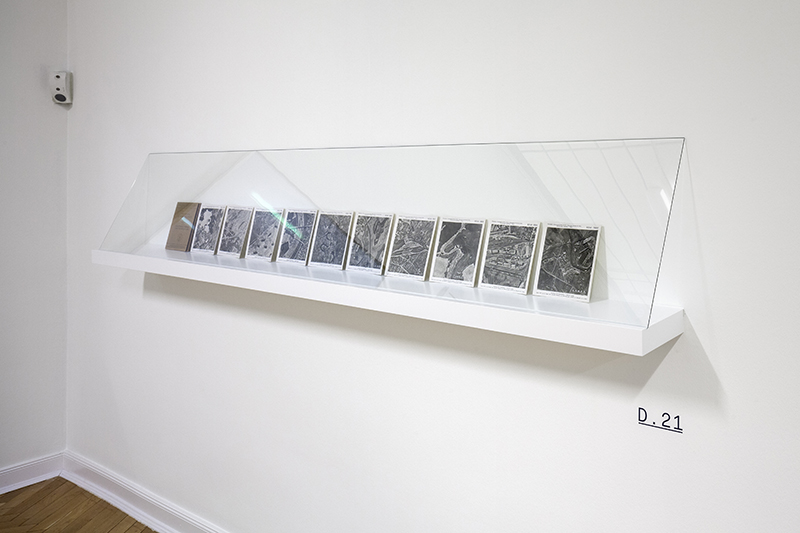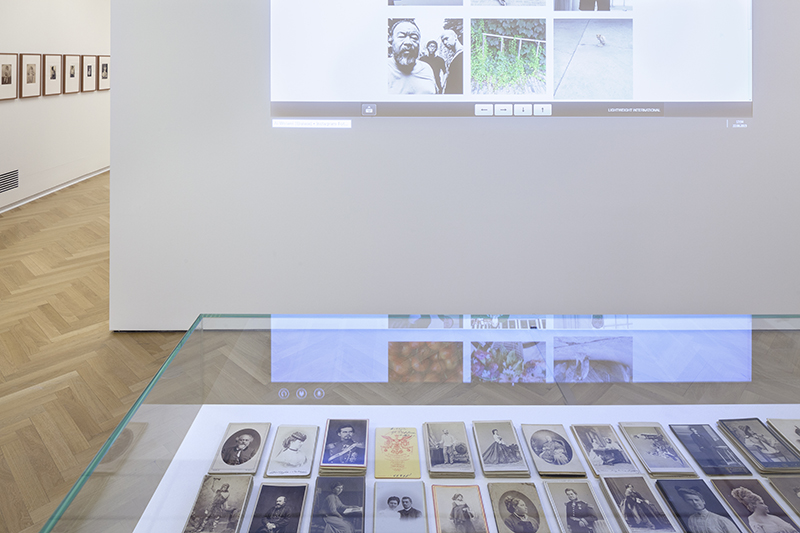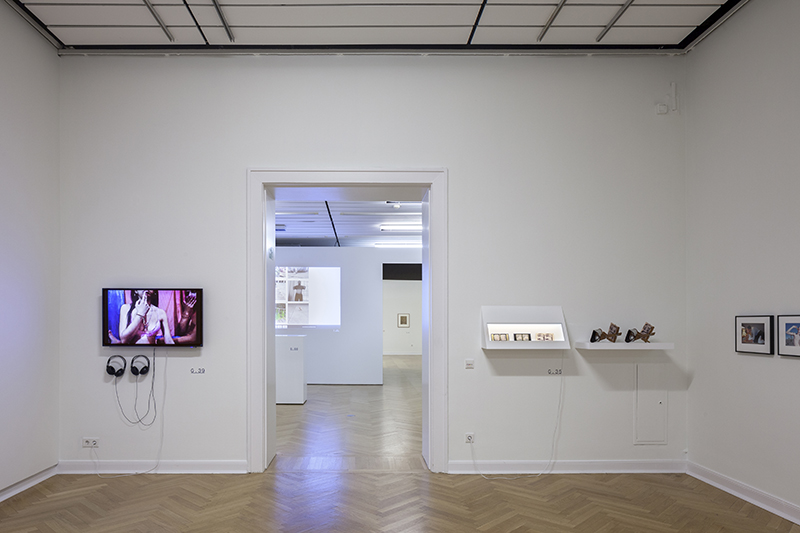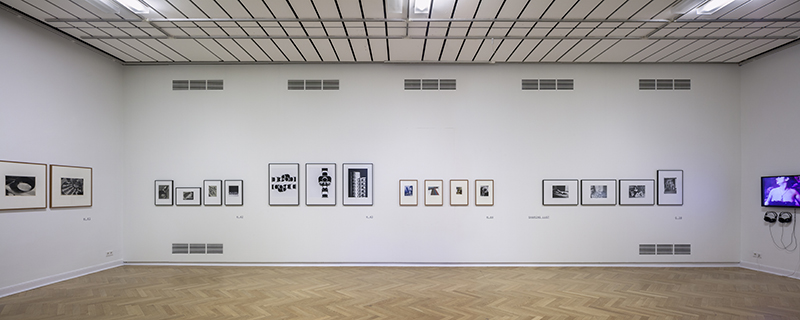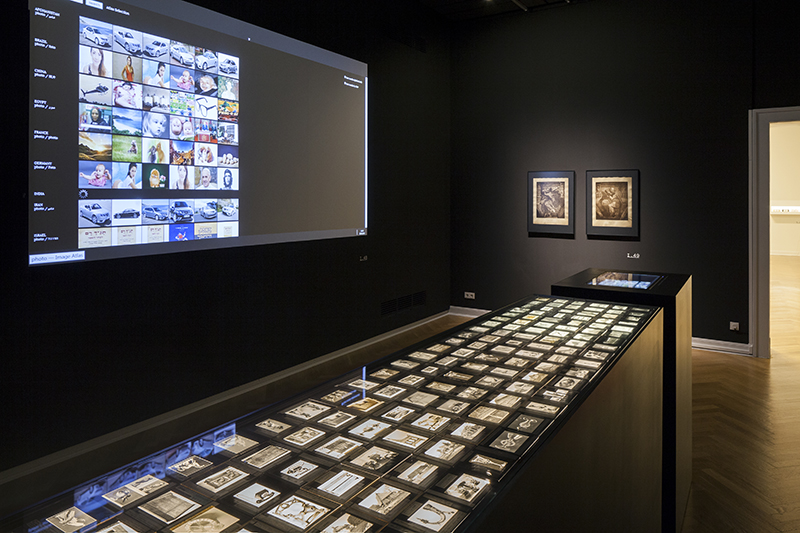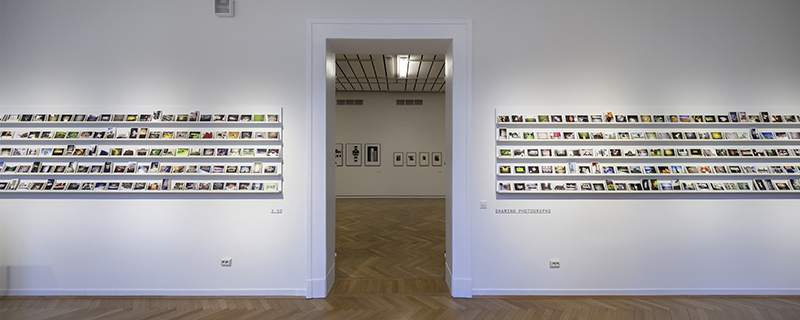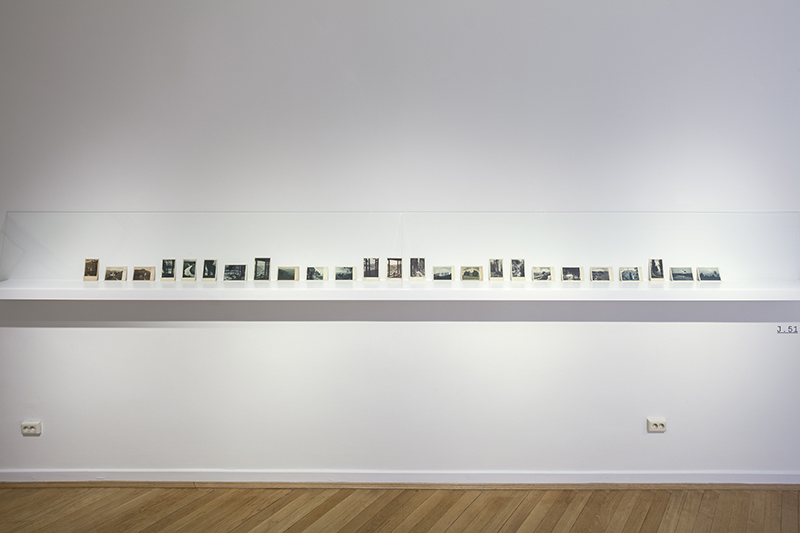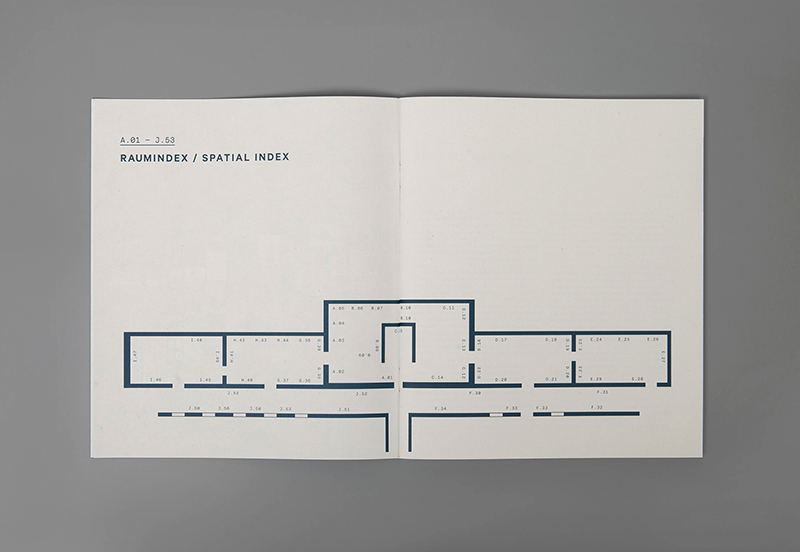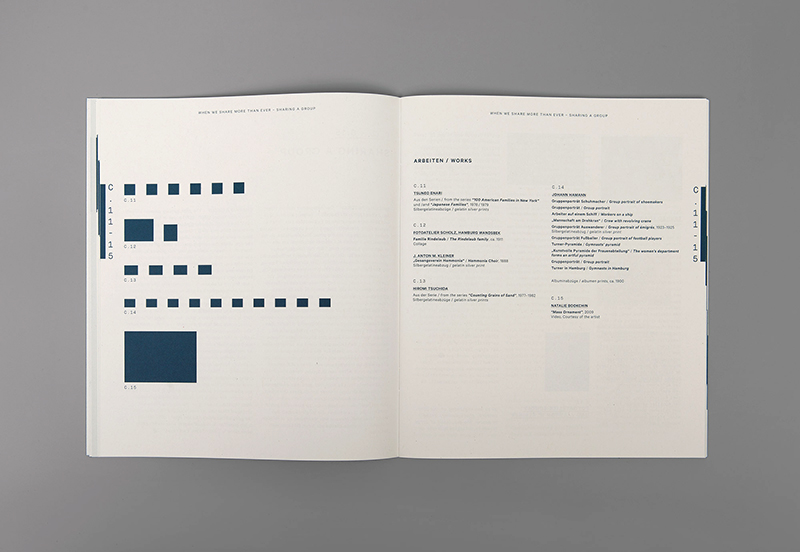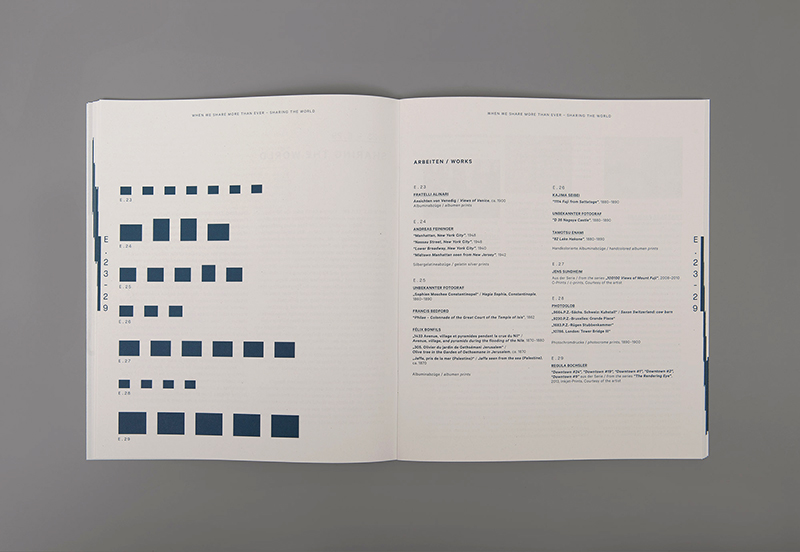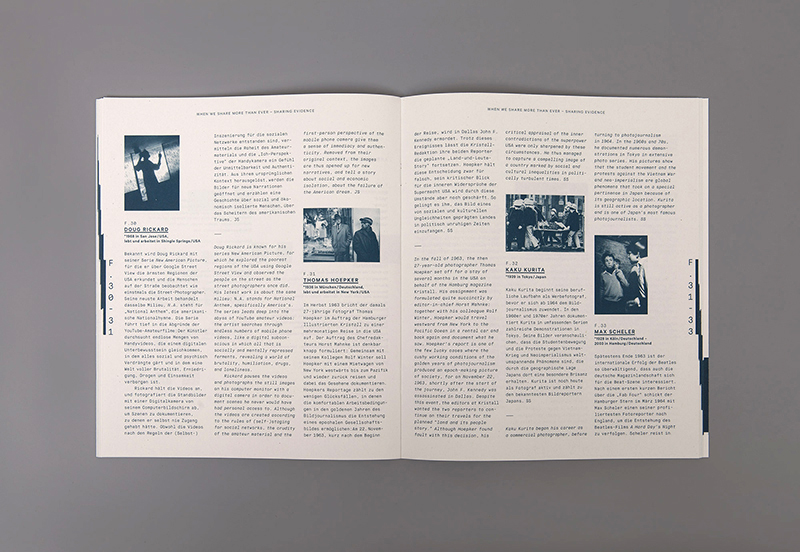6th Triennial of Photography, MK&G Hamburg
When we share more than ever
2015
Hamburg, DE
Museum für Kunst und Gewerbe
Commissioned by Esther Ruelfs
Download:- Spatial design by: Studio Miessen
- Project Leader: Markus Miessen, Berta Cusó
- Team: Paul Bourigan
- Curated by: Esther Ruelfs, Teresa Gruber
- Graphic design by: Studio Mahr
- Printed matter design by: Studio Mahr
- Photography by: Museum für Kunst und Gewerbe
Horizontal Inventory
The show “When We Share More Than Ever” consists of 246 works. It is the very nature of sharing in the digital age that (most) visual information is treated horizontally: democratically not in the sense of a philosophical prerogative, but rather a form of free-to-choose availability that is – at least partially – neutrally presented. This form of neutrality is based on a supposed pragmatic objectivity. Just think about Google Image Search. If I can have it at my fingertip, I am the one to make the decision.
With the aforementioned in mind, we have created a central-access exhibition layout, which takes as a primary motif the ambition of the inventory. From all that we have heard, been told, seen and experienced, the show and its meta-narrative is dealing with (and producing) different forms and formats of the archival. Even the (forthcoming) blog functions as an archive.
Producing a (spatial) inventory of all works (which you will find in this document), we have studied each “sharing”-cluster, investigating size against content and vice versa. The central driving force of our investigation is considering the huge number of works on show, the archival nature of the collection, and the meta-context of the Triennial as a form of Future Archive. Hence, our proposal for the show is dealing with the inherent relationship between art and trade, which – especially at the Museum für Kunst & Gewerbe – has, historically, been a major focal point. The exhibition design interrogates the role, function, and contextualization of an individual work within a cluster and the show at large. Moreover, it interrogates the relationship between different works as well as the role and position of the artist(s). In an exhibition format that attempts to unite 13 institutions (+ 38 satellite shows) within a content framework dealing with a specific form of production and output, photography and film, this underlying narrative of the archival becomes even more relevant.
The exhibition design works around a single concept of hanging, which is horizontally organized around a 1,2m baseline. This form of organization produces a fixed horizontal datum. It further means that each work has to negotiate as well as that is has to be negotiated – it produces an archival show in its purest form. All physical elements and objects to be built react to the very same datum and are cut off vertically at the horizontal datum. This form of vertical and horizontal display allows for a no-nonsense inventory that formulates a framework for a virtual-era Neue Sachlichkeit. As part of our design, we would like to propose to go even a step further and remove any physically present information about artist(s) and work(s). Each individual work on the wall (or in space) would simply be allocated with a number, underlining the intrinsic relationship between spatial installation and the printed matter guide, which will act as a deciphering manual for the entire exhibition.
The setting up of such scaffold and borderlines is crucial as each individual member of the audience to the project needs to take a position. Taking a position always has consequences. Only when a border is acknowledged, understood and recognised it can be broken, transgressed or (mis)used. By deliberately producing such agonistic field of (productive) encounters, the design aims to nurture and exploit notions of misunderstanding(s) and a pro-active outlook on the value of failure as the starting point of all forms of experiment. We understand the design of the show to act both as an act of enabling (facilitating consensus), as well as an act of disabling (exploiting dissensus).
Invited Artists: Laia Abril, Ai Weiwei, Regula Bochsler, Natalie Bookchin, Heman Chong, Aurélien Froment, David Horvitz, Trevor Paglen, Doug Rickard, Taryn Simon, Jens Sundheim, Penelope Umbrico.
From the Photography and New Media Collection of the MKG: Fratelli Alinari, Hanns-Jörg Anders, Nobuyoshi Araki, Francis Bedford, Félix Bonfils, Adolphe Braun, Natascha A. Brunswick, Atelier d’Ora-Benda, Minya Diez-Dührkoop, Rudolf Dührkoop, Harold E. Edgerton, Tsuneo Enari, Andreas Feininger, Johann Hamann, Theodor und Oscar Hofmeister, Thomas Höpker, Lotte Jacobi, Gertrude Käsebier, Kaku Kurita, Atelier Manassé, Hansi Müller-Schorp, Eadweard Muybridge, Arnold Newman, Terry Richardson, Max Scheler, Hildi Schmidt-Heins, Hiromi Tsuchida, Carl Strüwe, Léon Vidal, and more.
